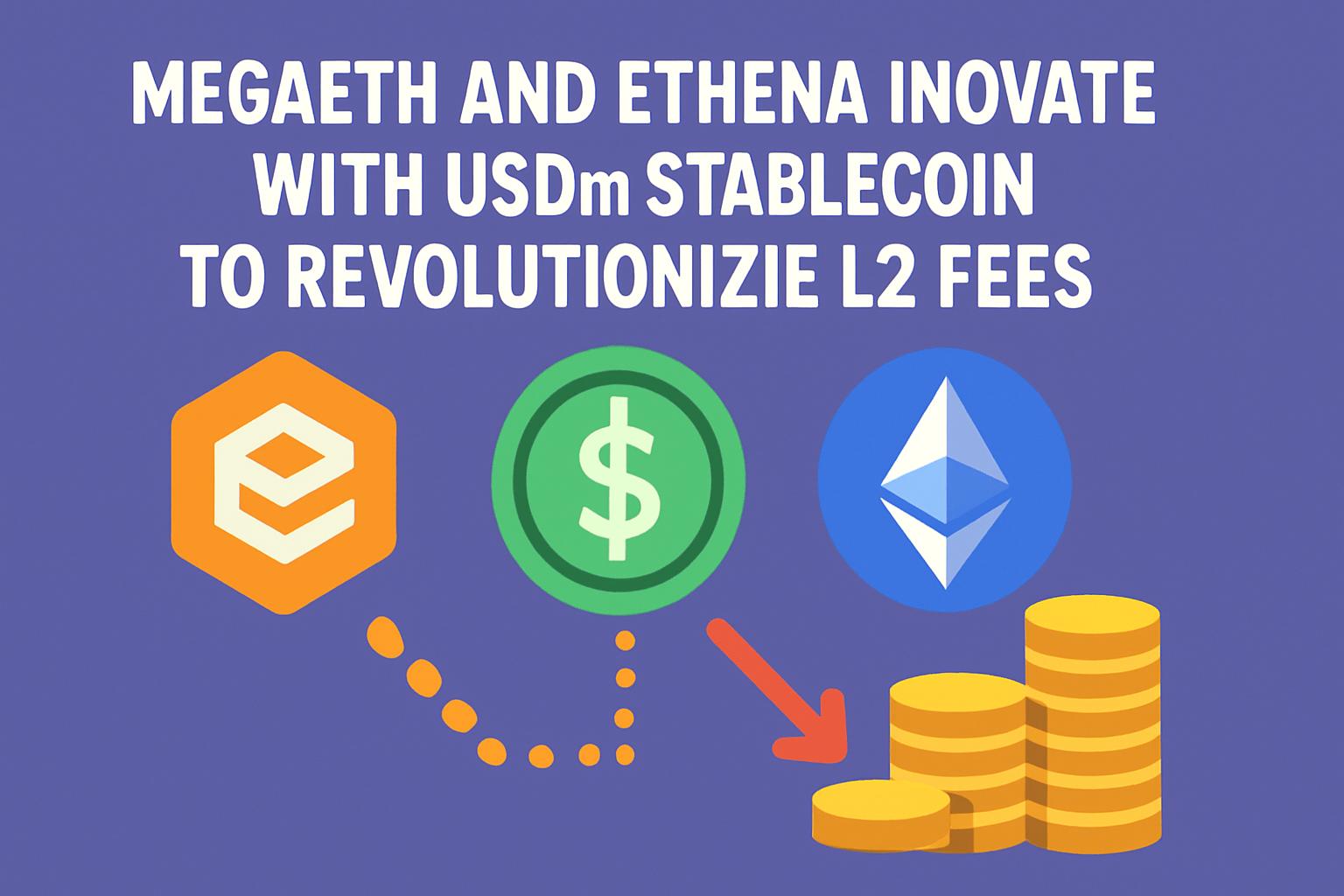 In a groundbreaking move, MegaETH has announced the launch of the USDm stablecoin in collaboration with Ethena Labs, bringing a novel approach to Layer 2 (L2) transaction costs. By leveraging yield reserves instead of additional profits from sequencers to fund network operations, this stablecoin seeks to lower and stabilize fees for users. It introduces a pioneering business model that could reshape Ethereum’s economic incentives.
In a groundbreaking move, MegaETH has announced the launch of the USDm stablecoin in collaboration with Ethena Labs, bringing a novel approach to Layer 2 (L2) transaction costs. By leveraging yield reserves instead of additional profits from sequencers to fund network operations, this stablecoin seeks to lower and stabilize fees for users. It introduces a pioneering business model that could reshape Ethereum’s economic incentives.
MegaETH Challenges Traditional Sequencer Fee Models with USDm
Endorsed by Ethereum co-founder Vitalik Buterin, MegaETH is rolling out USDm, a yield-bearing stablecoin, that departs from the traditional transaction fee model. Typically, L2s add a percentage fee on transactions submitted to the Ethereum mainnet, which serves as platform income for token buybacks or ecosystem incentives. However, this model often results in inconsistent transaction costs that track market fluctuations, posing a significant challenge to users.
USDm is set to offer a refreshingly new approach as MegaETH’s native stablecoin. It uses reserve earnings to subsidize operational expenses, ensuring lower and more predictable fees. This transparent model promises a frictionless environment for both users and developers.
MegaETH insists that repurchasing tokens is premature without native token issuance, making the subsidizing of sequencer operations the most rational current strategy.
Strategic Partnership with Ethena Enhances Regulatory Compliance
The launch of USDm is based on Ethena’s USDtb framework and backed by BlackRock’s tokenized bond funds. Custody via Securitize ensures institutional-grade transparency and compliance. Initially, USDm will only be exchangeable through USDtb, with no fiat conversions available as of yet. Although the issuance scale is undisclosed, it is intended to be adaptable over time.
The collaboration with Ethena also brings regulatory strengths. Ethena is the issuer of USDe, currently the third-largest stablecoin by market cap, at $12.8 billion, with USDtb’s circulation close to $1.5 billion. Furthermore, Anchorage Digital, a U.S. licensed crypto bank, is working with Ethena to introduce USDtb within the United States under the GENIUS regulatory framework.
USDm Sets the Vision for High-Performance Future Applications
USDm is poised for deep integration within MegaETH’s ecosystem, including wallets, payment providers, dApps, and on-chain services, while incumbent stablecoins like USDT0 and cUSD remain operational. The stablecoin’s promise of low fees and high efficiency opens the door for innovative application scenarios like streaming services and interactive gaming, underpinning on-chain costs and promoting long-term growth.
This strategic move positions MegaETH and Ethena at the forefront of creating a stable and scalable financial infrastructure, aiming to unlock the full potential of Ethereum’s Layer 2.

![[News] Bitcoin at a Turning Point? 10x Research Signals a Bullish Macro Shift Ahead](https://cryptoexplores.com/wp-content/uploads/2025/06/new20250616.jpg)
![[News] Binance Lists $HOME, the Gas-Free, Bridge-Free All-in-One DeFi App](https://cryptoexplores.com/wp-content/uploads/2025/06/news20250617.jpg)